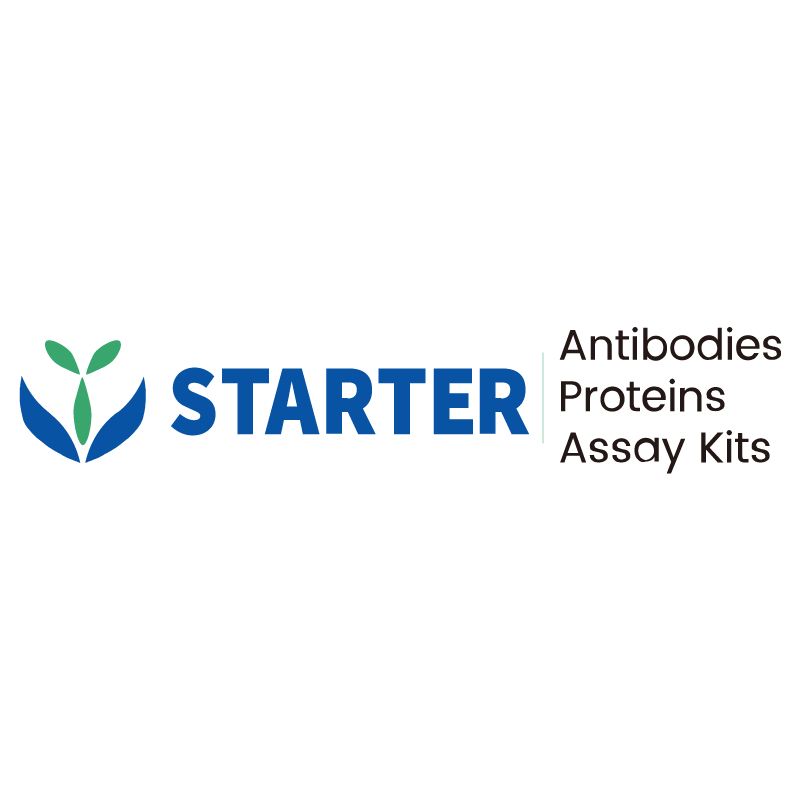WB result of DCAMKL1 Recombinant Rabbit mAb
Primary antibody: DCAMKL1 Recombinant Rabbit mAb at 1/1000 dilution
Lane 1: SH-SY5Y whole cell lysate 20 µg
Lane 2: TT whole cell lysate 20 µg
Secondary antibody: Goat Anti-Rabbit IgG, (H+L), HRP conjugated at 1/10000 dilution Predicted MW: 82 kDa
Observed MW: 40~90 kDa
Product Details
Product Details
Product Specification
| Host | Rabbit |
| Antigen | DCAMKL1 |
| Synonyms | Serine/threonine-protein kinase DCLK1; Doublecortin domain-containing protein 3A; Doublecortin-like and CAM kinase-like 1; Doublecortin-like kinase 1; DCLK1; DCDC3A; KIAA0369 |
| Immunogen | Synthetic Peptide |
| Accession | O15075 |
| Clone Number | S-1705-76 |
| Antibody Type | Recombinant mAb |
| Isotype | IgG |
| Application | WB, IHC-P, ICC |
| Reactivity | Hu, Ms, Rt |
| Positive Sample | SH-SY5Y, TT, NIH/3T3, mouse brain, mouse colon, rat brain |
| Purification | Protein A |
| Concentration | 0.5 mg/ml |
| Conjugation | Unconjugated |
| Physical Appearance | Liquid |
| Storage Buffer | PBS, 40% Glycerol, 0.05% BSA, 0.03% Proclin 300 |
| Stability & Storage | 12 months from date of receipt / reconstitution, -20 °C as supplied |
Dilution
| application | dilution | species |
| WB | 1:1000 | Hu, Ms, Rt |
| IHC-P | 1:1000 | Ms, Rt |
| ICC | 1:500 | Ms |
Background
DCAMKL1, or doublecortin and CaM kinase-like 1, is a protein that has homology to doublecortin (DCX) and is involved in regulating microtubule polymerization. It consists of an N-terminal region that is similar to DCX and a C-terminal domain that encodes a putative Ca2+/calmodulin-dependent protein kinase. It is expressed in the central and peripheral nervous systems, particularly in migrating neuronal populations, and is associated with microtubules. DCAMKL1 has been shown to associate with microtubules, stimulate the polymerization of purified tubulin, and form aster-like microtubule structures. Overexpression of DCAMKL1 can lead to microtubule bundling in cell lines and cultured primary neural cells. DCAMKL1 has also been implicated in the regulation of osteoblast function. Studies have shown that knocking down DCAMKL1 in mesenchymal stem cells enhances their differentiation into osteoblasts, and DCAMKL1 gene knockout mice exhibit increased osteoblast function, bone formation rate, and bone density.
Picture
Picture
Western Blot
WB result of DCAMKL1 Recombinant Rabbit mAb
Primary antibody: DCAMKL1 Recombinant Rabbit mAb at 1/1000 dilution
Lane 1: NIH/3T3 whole cell lysate 20 µg
Lane 2: mouse brain lysate 20 µg
Lane 3: mouse colon lysate 20 µg
Secondary antibody: Goat Anti-Rabbit IgG, (H+L), HRP conjugated at 1/10000 dilution Predicted MW: 82 kDa
Observed MW: 40~90 kDa
WB result of DCAMKL1 Recombinant Rabbit mAb
Primary antibody: DCAMKL1 Recombinant Rabbit mAb at 1/1000 dilution
Lane 1: rat brain lysate 20 µg
Secondary antibody: Goat Anti-Rabbit IgG, (H+L), HRP conjugated at 1/10000 dilution Predicted MW: 82 kDa
Observed MW: 40~90 kDa
Immunohistochemistry
IHC shows positive staining in paraffin-embedded mouse stomach. Anti-DCAMKL1 antibody was used at 1/1000 dilution, followed by a HRP Polymer for Mouse & Rabbit IgG (ready to use). Counterstained with hematoxylin. Heat mediated antigen retrieval with Tris/EDTA buffer pH9.0 was performed before commencing with IHC staining protocol.
IHC shows positive staining in paraffin-embedded rat colon. Anti-DCAMKL1 antibody was used at 1/1000 dilution, followed by a HRP Polymer for Mouse & Rabbit IgG (ready to use). Counterstained with hematoxylin. Heat mediated antigen retrieval with Tris/EDTA buffer pH9.0 was performed before commencing with IHC staining protocol.
Immunocytochemistry
ICC shows positive staining in NIH/3T3 cells. Anti- DCAMKL1 antibody was used at 1/500 dilution (Green) and incubated overnight at 4°C. Goat polyclonal Antibody to Rabbit IgG - H&L (Alexa Fluor® 488) was used as secondary antibody at 1/1000 dilution. The cells were fixed with 100% ice-cold methanol and permeabilized with 0.1% PBS-Triton X-100. Nuclei were counterstained with DAPI (Blue). Counterstain with tubulin (Red).


